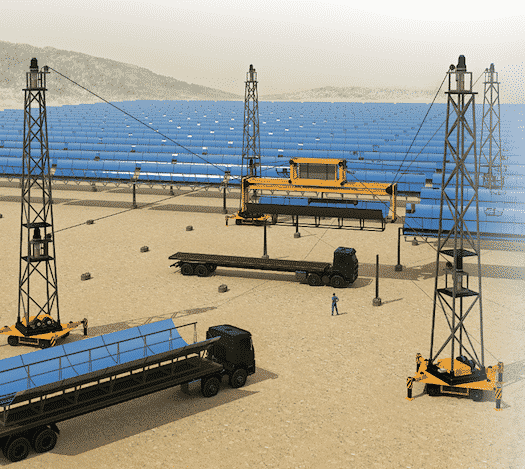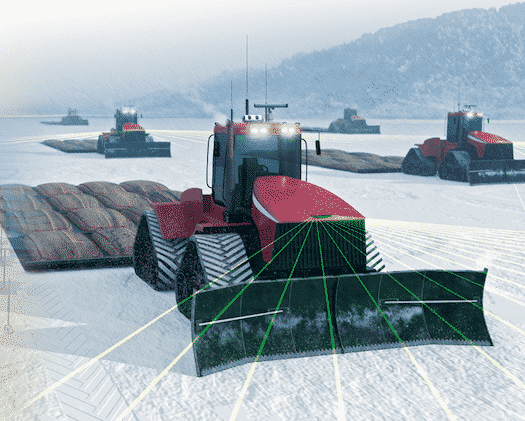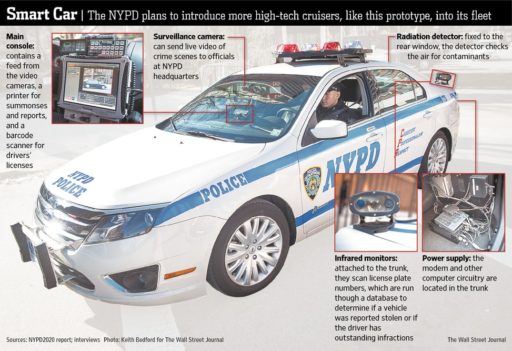In some cases, people are losing their job because of Advanced Robots and Machines. Most of the time, we take this replacement in a Negative way. Again, this time Robots are replacing Humans from doing the Heavy Lifting in the Sahara and Antarctica. Is this replacement Good or Bad? Let’s find out.
As the scorching heat of Sahara Desert burns the human skin and the super cooling system of South Pole in Antarctica freeze people, so these two places are absolutely the most inhospitable environments on the planet. Building In The Sahara and Traversing Antartica, these two projects are already under construction. Hope so, these projects will save humans from having to work in the two Intolerable ares. Though people will lose their job but I think they are not dumb because it’s better to lose job than to lose life.
Details :
Building In The Sahara : At a Glance
A 2,270-square-mile solar farm is being constructed in the Sahara. The Fraunhofer Institute for Manufacturing, Engineering and Automation in Stuttgart, Germany, is developing a robot to construct it. The 100-ton Industrial Parallel Kinematics device (IPAnema) is similar to the Skycam that hovers above the field at NFL games: a box with jaws built for grasping solar reflectors, four mobile towers suspend the end effector hold the 2,000 feet of polyethylene cable. This IPAnema is going to be ready for work by 2015.
End Effector : The steel and aluminum end effector are especially built for grasping and lifting. It is able to pick up and place thousands of seven-ton, 40-foot-long solar reflectors. It then sets them down anywhere within the 26,896 square feet between the four support towers.
Winches : The IPAnema’s motor-driven winches spool and unspool eight cables very fast and smoothly which controls the suspended end effector. With the speed of almost 3 mph, the winches rotate the end effector on all three axes. Besides, each cable nearly supports 10,000 pounds.
Force Sensors : At each end of the cable, attached to both the winch and the suspended end effector, are force sensors. The sensors synchronize the winch motors to within two milliseconds and track the end effector’s movement in space within millimeters.
Support Towers : The robot’s framing system—four modular 36-foot-high steel pylons—arranges itself on automated bases. The four towers create constant tension to prevent the payload from swaying, which will help secure it against accidents in high desert winds.
Traversing Antartica : At a Glance
This winter the National Science Foundation and one of its contractors, Raytheon Polar Services, is shuttling fuel 1,040 miles from its coastal Antarctic base, McMurdo Station—the primary American logistical hub—to the Amundsen-Scott South Pole Station. To be noted that, a century ago, Norwegian was the first man who used sled dogs and skis to reach the pole of Roald Amundsen. The robotic vehicles will crawl across the continent at 5 to 12 mph for 24 hours a day, accomplishing in just a week and a half.
Bladders : Each tractor hauls at least ten 3,000-gallon fuel bladders and consumes nearly two of them during the 2,080-mile round trip.
Lead Vehicle : On-board computers will determine the ideal speed and direction to maximize fuel efficiency, relaying the information to the rest of the fleet. Algorithms determine the ‘threat’ of objects and reroute the tractors accordingly.
Twin Cameras : Positioned about a foot apart, the two cameras create stereographic imagery to distinguish between a pile of snow, a snowmobile, a person and an open crevasse. Then the cameras gauge the object or feature’s distance.
ARS-300 Radar : The vehicle uses its radar to ‘see’ through storms. Although the radar cannot read surface structures as accurately as the tractor’s laser scanners can, so the sweeping snow confuses the laser.
Laser Scanner : The tractor’s laser scanners fix on details in the terrain up to 200 feet away in order to create a map that is uploaded to the computer and used for navigating. The scanner also helps avoid collisions between tractors.
Well, the situation is like this : “Do not try and bend the spoon. That’s impossible. Instead… only try to realize the truth. There is no spoon.” Like past civilizations from the past that were oppressed, they left their homes and travel far away to new lands, remote and free. The same thing is happening in here. It seems, the robot community has found a few remote locations in the world, of which humanity will be the minority and of a lesser influence.
Anyway, after knowing all the risk and danger of working in these two places, I think no one will show interest to work in these two place. What do you think? Don’t forget to write your comment below the box.
Source : PopSci
Special Thanks : Arnie Cooper, Andy Isaacson






Wonderful article.